#14 Face of War
Only Printing / Spring 1987 / 52 pages / Rip Off Press
How I won the War • Fabulous Furry Freak Brothers • Do Nothing Decade • Dinoboy • Amazon • Interlude • Philbert and the Street Entertainer
#14 Face of War

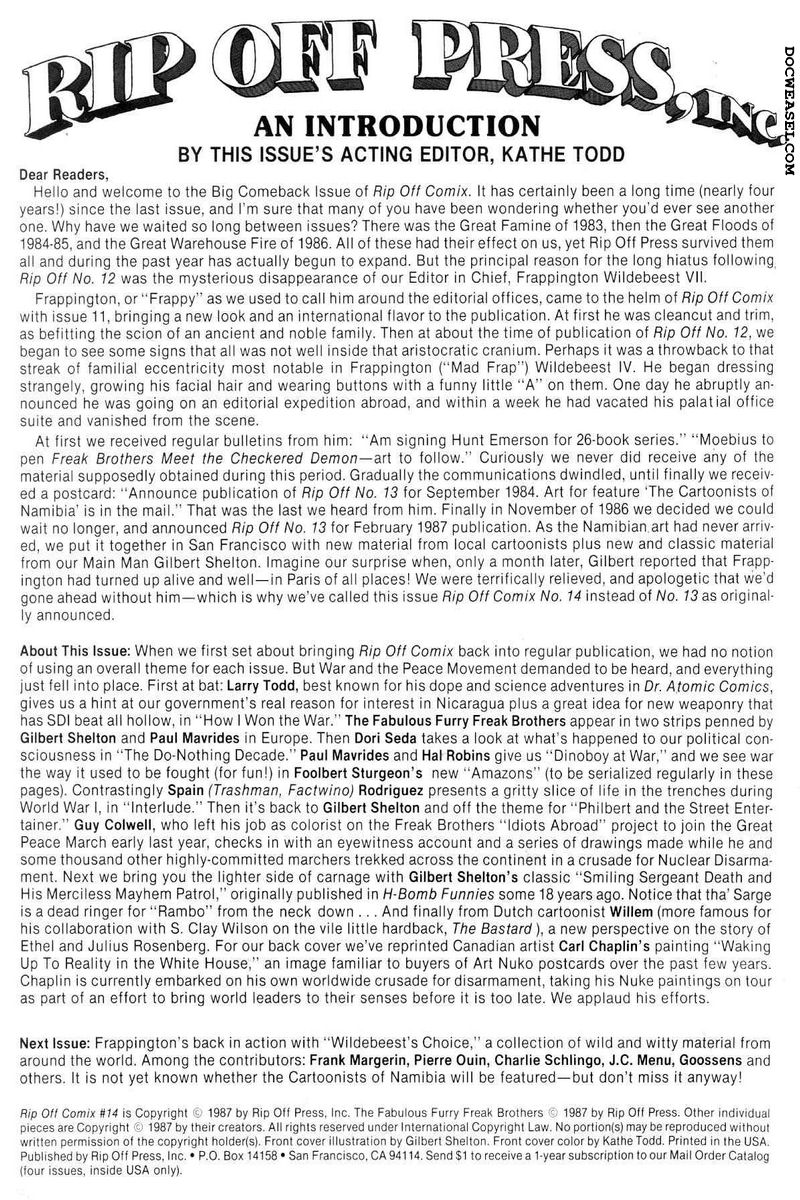




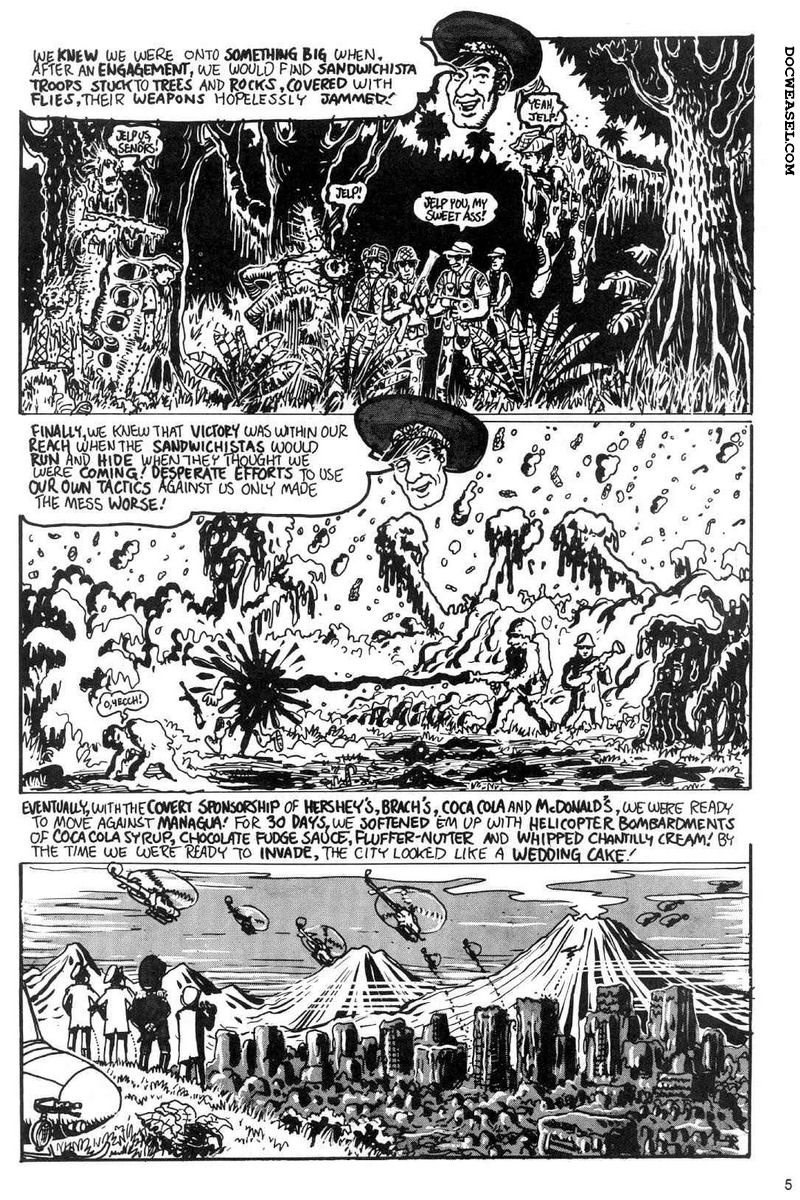






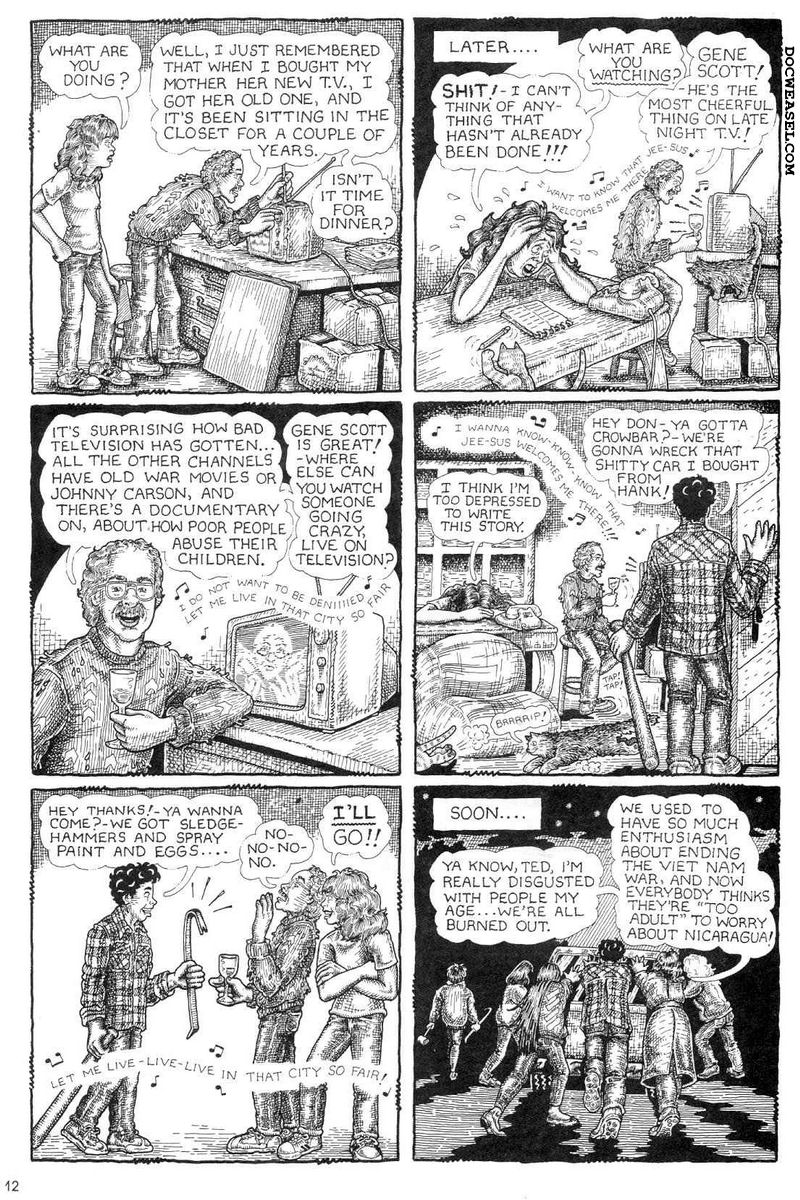








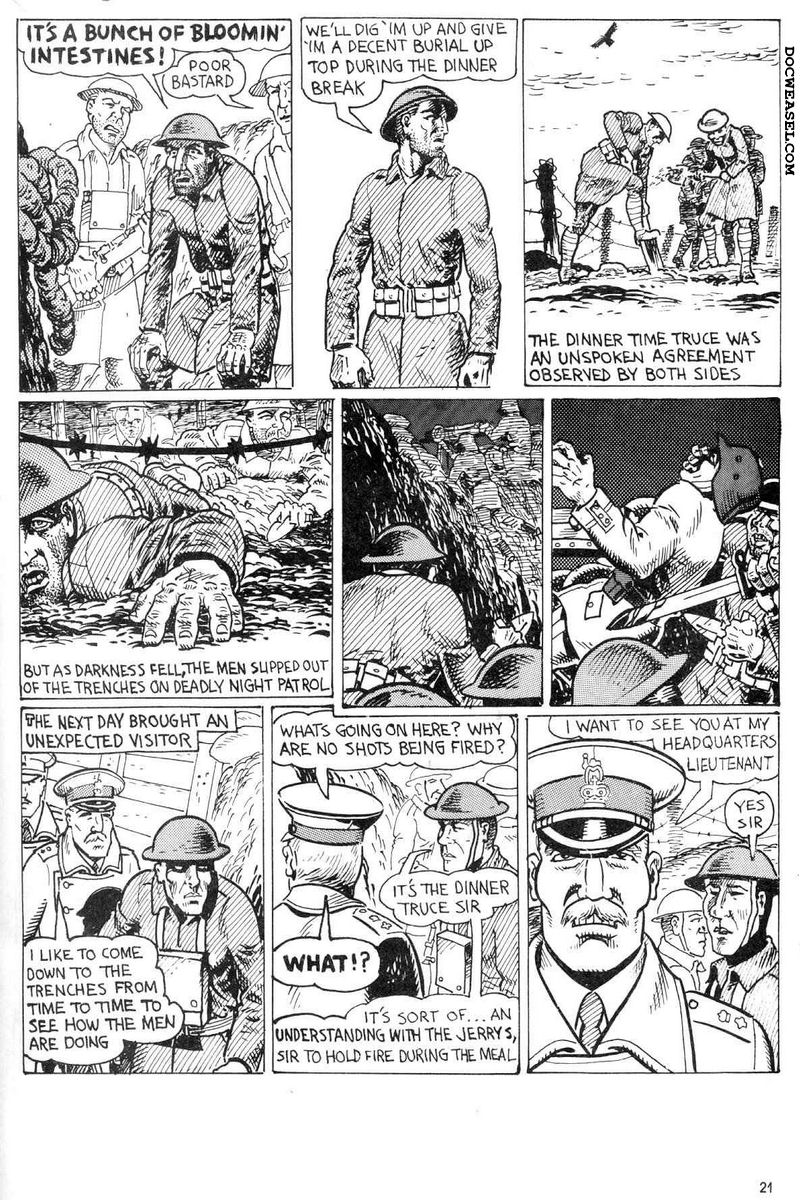


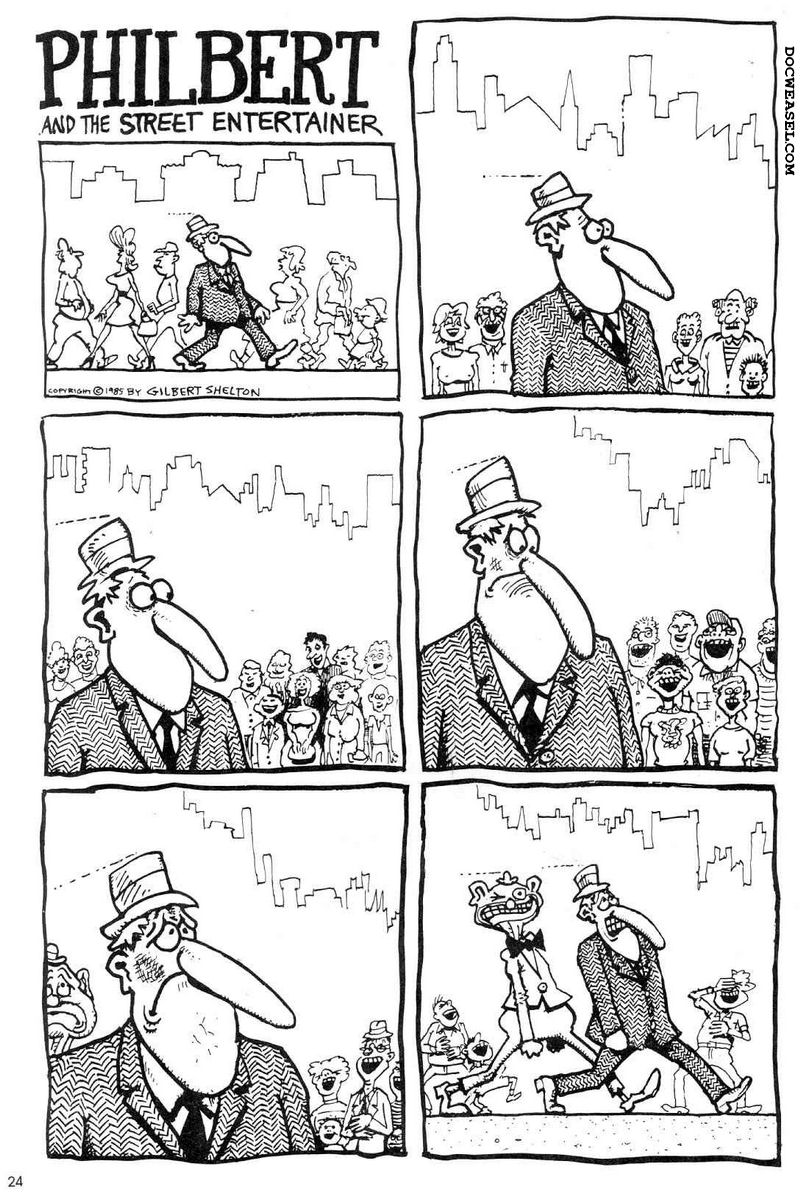
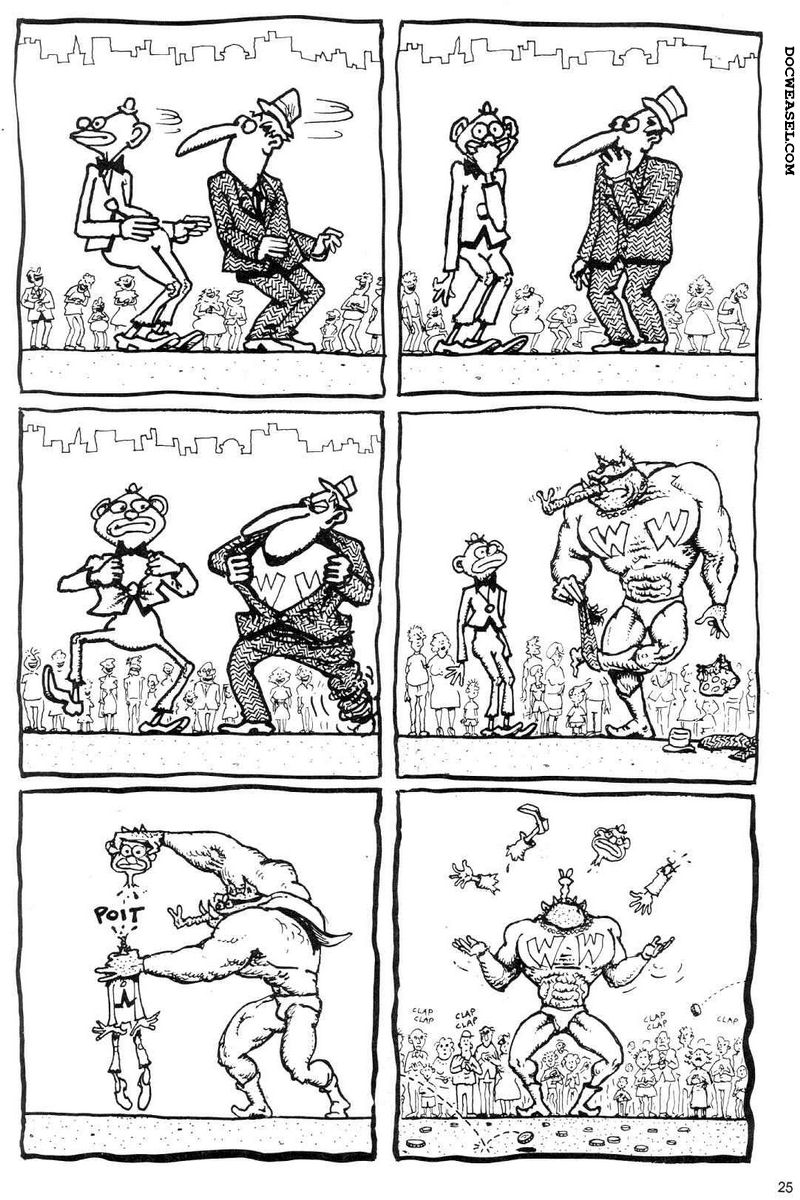




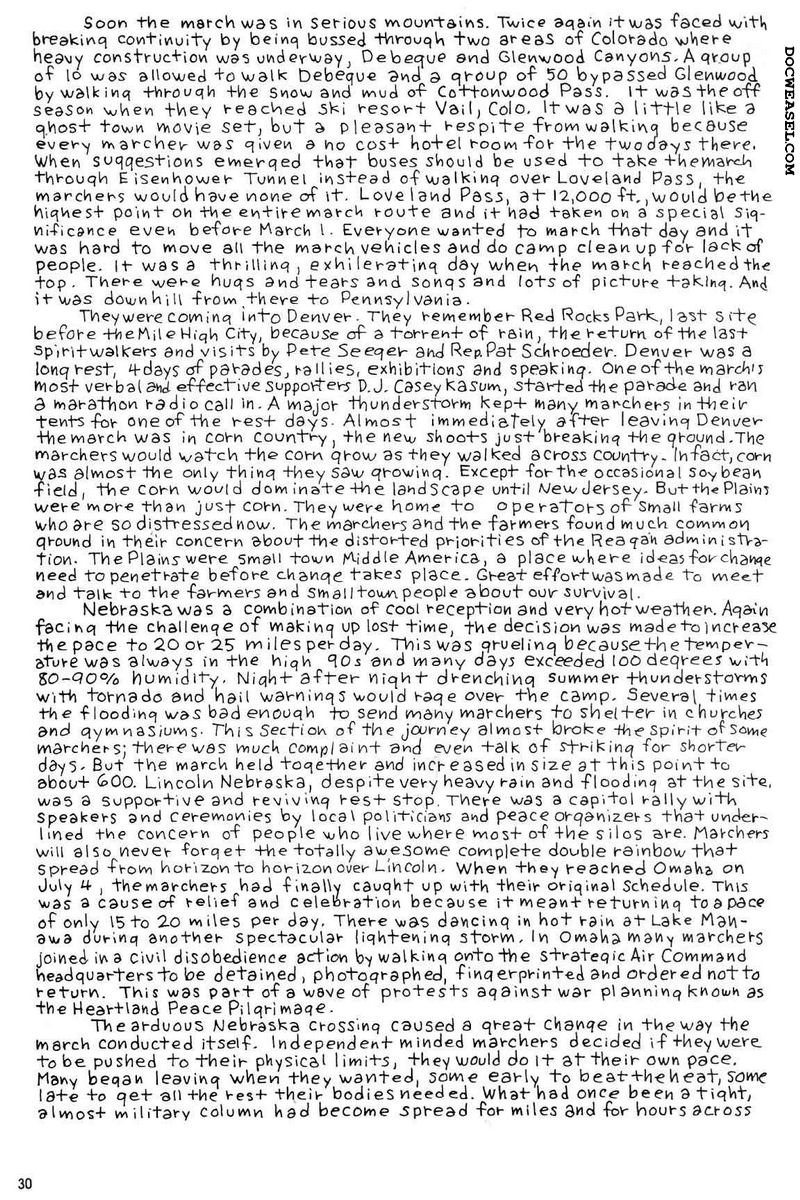




















about this issue
After ceasing production for nearly four years, Rip Off Comix returns with its 14th issue. The company had been planning the 13th issue before going on hiatus, but after so many years without publishing the title, and perhaps thinking it bad luck to return with issue 13, they decided to just skip to the 14th issue.
Kathe Todd, the acting editor of this issue and chief editor for most of remaining run, provides a bullshit excuse for their hiatus in her introduction (viewable in the lightbox link on the right), blaming it on the mysterious disappearance of Frappington Wildebeest VII. All very amusing, but we know it was about one thing: money! The company had lost their shirts on the high production costs of issues 11 and 12 and scurried back to publishing the more reliably profitable Freak Brothers comic books. But four years later, after Rip Off Press had relocated to Auburn when their previous building burned down, and fresh off the success of the Freak Brothers' Idiots Abroad trilogy, Fred and Kathe Todd decided to give Rip Off Comix another go.
So here we have the "Big Comeback Issue," which has a theme of "The Face of War." The opening story, by the reliably detailed Larry Todd, is a spoof on the Iran-Contra scandal in the mid '80s. The story portrays a visit to Nicaragua by a U.S. party, led by a brain-dead Ronald Reagan and George H. Bush, for a ceremony hosted by the new Prime Minister, Oliver North. Of course, all the names have been changed to protect the guilty, but if you know about the Iran-Contra affair, or even brush up on it via the Wikipedia link above, you'll find this story quite amusing and still reflective of the jingoistic foreign policy of today's American government.
Following a pair of brief Freak Brothers strips, one of which is at least directly related to international politics, Dori Seda contributes "The Do-Nothing Decade," in which she laments the rampant apathy of American society regarding international politics (including the Iran-Contra scandal). The irony is that the people she's closest to are the same type of people she's complaining about. Poor Dori. No wonder she was a chain-smoker.
Frank Stack begins a five-part story with this issue, called "Amazons," which features a mythical battle between Greek and Amazon warriors (male and female, respectively) during the Trojan War. Loosely based on Homer's Iliad and other classical texts, the story stars the Greek hero Achilles, who leads a band of warriors on a patrol mission and then into battle with Amazon women. This first chapter sets the stage for the first confrontation, during which the Greek men are stunned to learn how fierce and ruthless the women can be. In 1972, Stack produced the brilliant Amazon Comics, and here he reprises the same confrontation with a slightly different plot. Hell, anything Stack wants to do, I'm behind it 100%!
Spain Rodriguez delivers a decent tale on World War II combat strategy, followed by an amusing, wordless two-pager that sees Philbert Dexanex resort to his Wonder Wart-Hog persona to permanently halt the mocking antics of a street mime.
Kathe Todd generously provided Guy Colwell with nine pages to give us his eyewitness account of "The Great Peace March," in which about a thousand people marched across the country from L.A. to Washington D.C. for nine long months (and 3,700 miles) in 1986 to crusade for nuclear disarmement. The story is mostly a hand-written description by Colwell, peppered with lovely ink sketches that he drew along the way. Though Colwell's 1991 book Central Body contains some of these same sketches and a brief introduction, this is the only place to read his full account of the march. The Great Peace March remains an inspirational event and has been memorialized in several books and a documentary film. Colwell remains the underground's conscience of justice and equality.
The issue reprints Shelton's "True Battle Story of Smiling Sergeant Death and His Merciless Mayhem Patrol," which originally appeared in Hydrogen Bomb and Biochemical Warfare Funnies in 1970. It was a classic tale of a secret military mission gone awry 17 years ago, and it's not only worth a reprint in 1987 but worthy of another one today.
The magazine closes with what I believe is an absurd and completely fictionalized story about Julius and Ethel Rosenberg, who sold military (and atomic bomb) secrets to the Russians and were the only civilians ever executed in the U.S. for espionage.
Rip Off Comix pulls off a fairly triumphant return with its 14th issue and sets the stage for another 16 quarterly issues over the course of the next four years.
HISTORICAL FOOTNOTES
It is currently unknown how many copies of this comic book were printed. It has not been reprinted. Like other magazine-format comics with numbered pages and a table of contents, the index of comic creators below follows the page numbers defined in the magazine instead of counting the covers as additional numbered pages.
COMIC CREATORS
Kathe Todd editor, front cover (color), inside front cover (introduction)
Gilbert Shelton front cover (art), 8-10 (collaboration), 24-25, 35-45
Larry Todd 2-7
Paul Mavrides 8-10 (collaboration), 14 (collaboration)
Dori Seda 11-13
Hal Robins 14 (collaboration)
Frank Stack 15-19
Spain Rodriguez 20-23
Guy Colwell 26-34
Willem 46-48
Larry Gonick inside back cover (ad)
Carl Chaplin back cover

